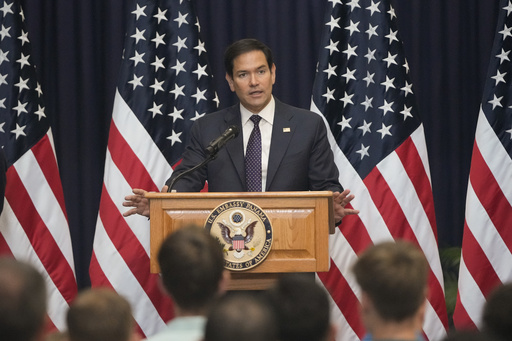
U.S. Secretary of State Visits Panama, Pressures on Canal Management
During his inaugural overseas trip as U.S. Secretary of State, Marco Rubio conveyed a significant message to José Raúl Mulino, the President of Panama: take immediate action to curb Chinese influence in the Panama Canal region or risk retaliation from the United States. In his meetings with Mulino, Rubio emphasized the importance of the canal not just for Panama but for global trade as a whole.
After their discussions, Mulino shared with the media that there were “no real threats” regarding military force or actions revoking control over the canal. Rubio conveyed President Donald Trump’s concerns about the Chinese presence, suggesting that this might contravene a treaty established when control of the waterway was transferred from the U.S. to Panama in 1999. This agreement mandates the canal’s neutrality.
A statement from the State Department reflected the urgency in Rubio’s message: the current situation is “unacceptable,” and without immediate changes, the U.S. may have to pursue actions to protect its treaty rights. This frankness in diplomacy appears to align with the assertive approach Trump has adopted in international relations, which has included imposing significant tariffs on neighboring countries, escalating tensions, and inciting retaliatory measures.
Mulino described the dialogue with Rubio as respectful and constructive, asserting that he did not perceive any imminent threat to the treaty’s validity. The Panama leader also revealed that Panama will not renew its participation in China’s Belt and Road Initiative upon its expiration. This initiative, aimed at bolstering infrastructure and development in member countries, has faced criticism regarding its tendency to drive those nations into substantial debt.
Following his meetings, Rubio took a tour of the Panama Canal at sunset, accompanied by Ricaurte Vásquez, its administrator. Vásquez affirmed that the waterway would remain under Panama’s jurisdiction and accessible to all nations. During the tour, Rubio observed operations at the canal, taking note of a red tanker making its way through the locks.
As Rubio met with government officials, a protest occurred approximately 200 meters from the presidential palace, where demonstrators displayed Panamanian flags and shouted slogans like “Marco Rubio out of Panama.” In an expression of dissent, some individuals burned a banner featuring the images of both Trump and Rubio. Riot police strengthened security by preventing the protestors from advancing further.
Rubio also addressed another key aspect of Trump’s agenda: the controversial issue of illegal immigration. He praised the efforts of Panama in collaborating on this front, especially in terms of accepting returned migrants. However, his visit comes at a time when U.S.-funded programs aimed at combating illegal immigration and crime in Central America have been halted due to a freeze in foreign aid and orders to suspend ongoing projects.
On a related note, Defense Secretary Pete Hegseth announced via social media his plans to visit the U.S.-Mexico border to oversee troops engaged in immigration enforcement operations.
In an opinion piece, Rubio highlighted the complexities facing the region, naming factors such as mass migration, drug trafficking, and the adverse policies from Cuba, Nicaragua, and Venezuela as key challenges. He remarked that the canal is vulnerable to external pressure due to Chinese management of port facilities at both its ends.
Despite Mulino’s firm stance against negotiations regarding the canal, some analysts speculate that Panama may consider alternatives to the current management by the Hong Kong-based Hutchison Ports company. An ongoing audit might lead to reevaluation of the company’s contract, originally granted a non-competitive extension for 25 years.
The extent to which the Trump administration would find a transfer of canal operations to a U.S. or European entity sufficient remains uncertain, as the demands seem to surpass just operational control.
Rubio’s tour, which is set to continue through other Central American countries, occurs amid a broader freeze on U.S. foreign support. While the State Department noted waivers for select crucial programs in the nations Rubio will visit, specifics about these arrangements have yet to be disclosed.

